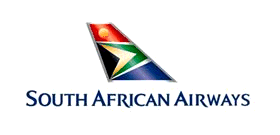 SAA returns 17 aircrafts to owners
SAA returns 17 aircrafts to owners
South African Airways has returned 17 aircraft to lessors so far. This is because the lessors have elected to initiate the termination of the leases, the state-owned airline's business rescue practitioners confirmed on Friday.
The aircraft returned include four A319s; three A340-300s; three A340-600s; five A330-200s and two B737s. The airline is now left with three A319s, ten A320s, one A330-200, five A330-300s and four A350-900s.
In the view of aviation analyst Guy Leitch, the lessors would likely rather have the assets back under their control than under the "risk" of the SAA business rescue process. "It looks like SAA is struggling to match their expected new fleet requirement with their existing fleet. The A320s, which the airline is still holding on to, will likely be superfluous going forward, because it is expected that domestic and regional operations will be left for for its subsidiary Mango, which operates a Boeing fleet," says Leitch.
The Cape Town Convention, signed in 2006, aimed to facilitate asset-based financing and leasing of aviation equipment by reducing a creditor's risk and increasing legal predictability in these kinds of transactions, including if a debtor goes insolvent or default. Although South Africa was among the countries who signed the treaty, it has never ratified it.
If all goes according to plan, the business rescue practitioners intend to publish their business rescue plan on Monday. SAA was placed in business rescue after a series of turnaround attempts, that resulted in more than R30 billion in government bailouts being poured into the airline, failed. In mid-April the practitioners informed creditors that the DPE denied a request to fund the business rescue by R7.7 billion.
For a business rescue plan to be accepted, it requires 75% approval of the voting interest present at a creditors meeting. Furthermore, 50% of the voting interest must be independent of nature. If the plan is rejected at that meeting, it can be reviews and presented at a second meeting. If it is rejected at the second meeting, the company has to be placed in liquidation.
